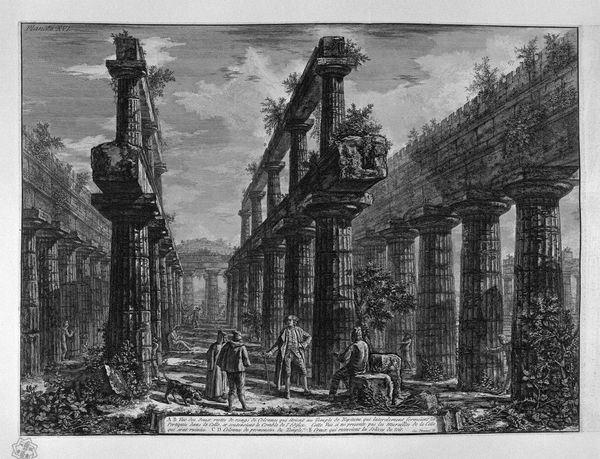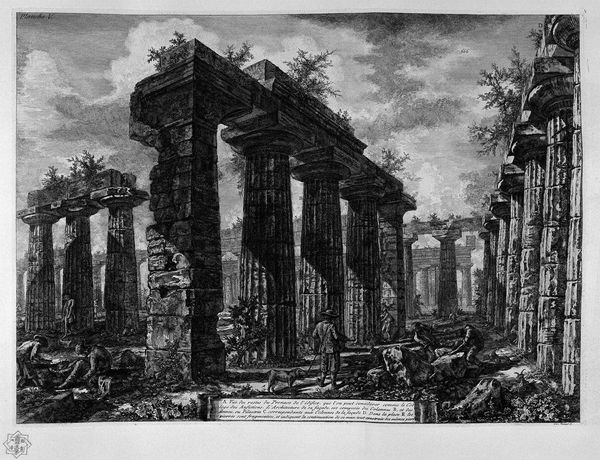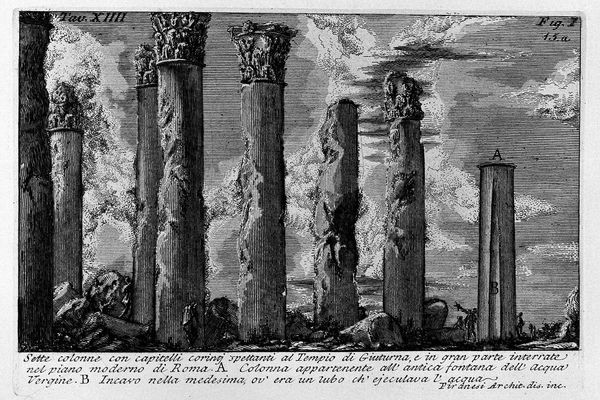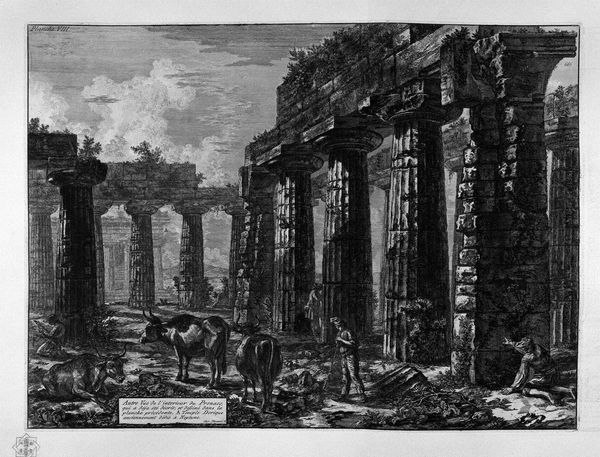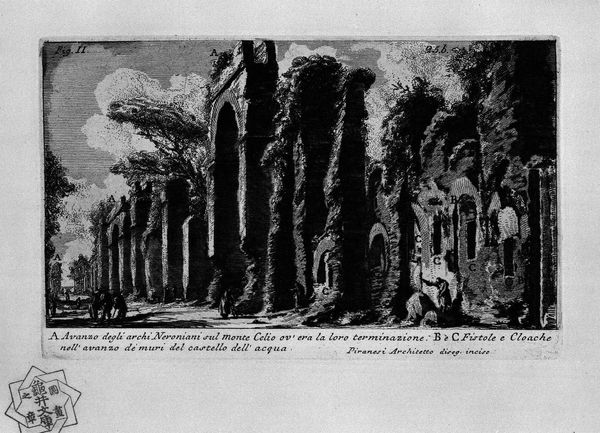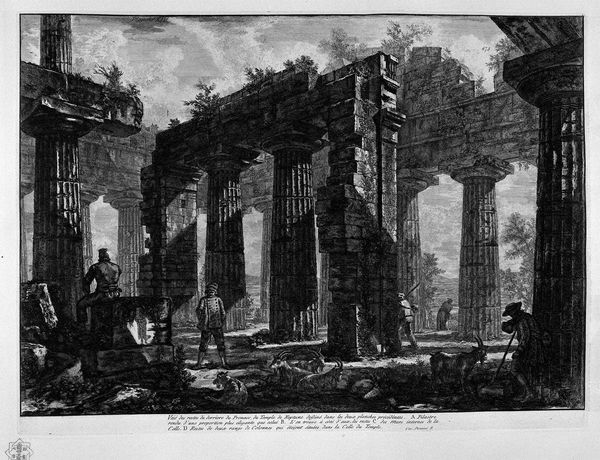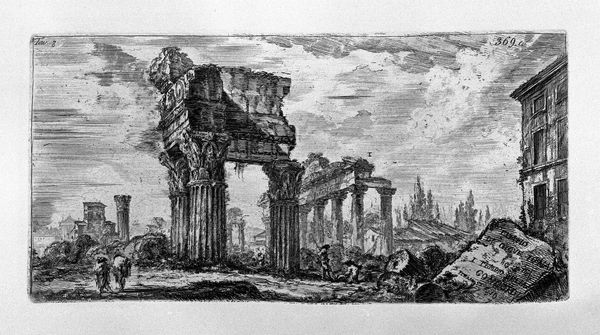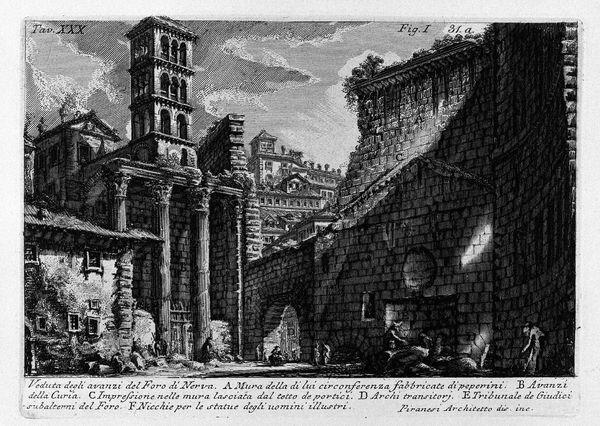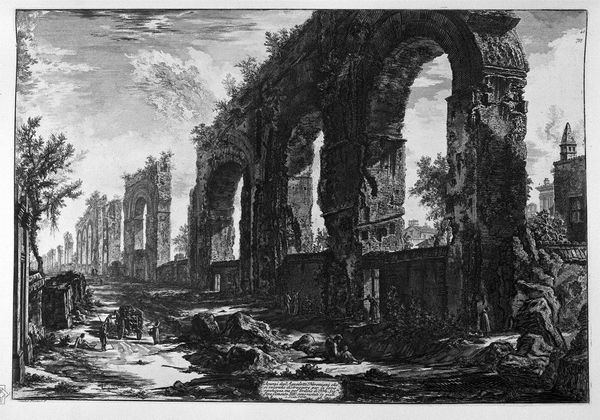
print, etching, engraving, architecture
# print
#
etching
#
landscape
#
romanesque
#
line
#
cityscape
#
engraving
#
architecture
Copyright: Public domain
Curator: Right, let's talk about this intriguing image: "The Roman Antiquities, t. 1, Plate XXII. Temple of Cybele," an etching and engraving by Giovanni Battista Piranesi, dating back to 1756. Editor: Oh, immediately, this strikes me as haunting. There’s something melancholic in the skeletal remains of the temple, yet grand too. I’m getting lost in the details. Curator: The power resides in Piranesi's technique. He combined etching and engraving. Think of the labor involved, the careful planning and execution across these metal plates, multiplied by the print runs. The production is part of its aura. Editor: True! The detail! Look at how those lines, seemingly chaotic, come together to depict the weathering on those ancient columns! I can almost feel the rough stone. Did Piranesi visit the site, do you know? Curator: Indeed. He meticulously studied Roman antiquities. He wasn't merely interested in their aesthetic beauty, but their historical, social, and political significance, how Rome projected power. This series reflects both careful archaeological work and dramatization of Roman spaces, ruins consumed by time, and perhaps serving as a memento mori to reflect on humanity. Editor: Definitely, it’s that contrast—that power, lost, almost comically rendered as rubble. But I can see beyond that. Imagine the artisan making it, the paper and ink... Even *that* is almost gone. Curator: These prints circulated widely. They shaped the 18th-century view of Rome, the "grand tour" experience and its commodification. Look at the size of the human figures relative to the buildings, these became highly sought-after souvenirs, mass-produced images of supposedly unique aesthetic experiences. Editor: Well, regardless of that context, it inspires something grand within me—even this shell of a temple hints at possibilities. Curator: It really captures a fascinating dialogue, between decay and endurance, past grandeur and present scrutiny. Editor: Yeah, maybe ruins offer not endings, but new beginnings, I think. Let’s leave our listeners with *that* thought.
Comments
No comments
Be the first to comment and join the conversation on the ultimate creative platform.
